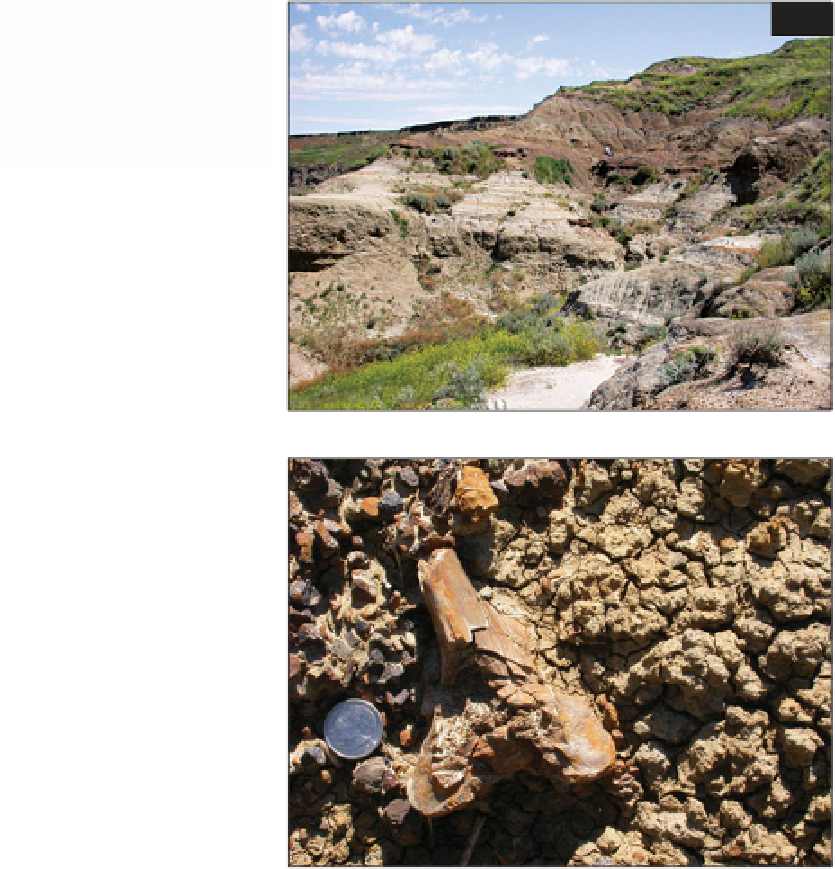Geoscience Reference
In-Depth Information
Brown's place in paleontological
history was secured, but he was not the
first geologist to visit this region. Some
50 years earlier the Williston Basin had
been surveyed by FB Meek and
Ferdinand Hayden (Meek and Hayden,
1856; see also p. 188), who had
differentiated the 'uppermost Cretaceous
Fox Hills Beds' from the overlying 'Fort
Union or Great Lignite Group' of
Tertiary age. The beds in which Brown
discovered his dinosaurs, along with
freshwater mollusks, and which he called
the 'Hell Creek Beds' (Brown, 1907),
were immediately above the Fox Hills
Beds (
164, 165
) and therefore comprised
the lower part of Meek and Hayden's Fort
Union Group. Brown, however,
correlated the Hell Creek Beds to the
Cretaceous Period, based on the
similarities of the dinosaurs to those of
the older Judith River Group (see p. 183)
and the differences between the
mollusks, mammals and plants to those of
the known Tertiary record. In other
words he placed the Cretaceous/Tertiary
164
164 The Ruth Mason Dinosaur
Quarry near Faith, South
Dakota. The dark beds of the
Hell Creek Formation overlie
the lighter beds of the Fox
Hills Formation.
165
165 The dinosaur-rich beds of
the Hell Creek Formation
exposed in the Ruth Mason
Dinosaur Quarry see 164.




Search WWH ::

Custom Search